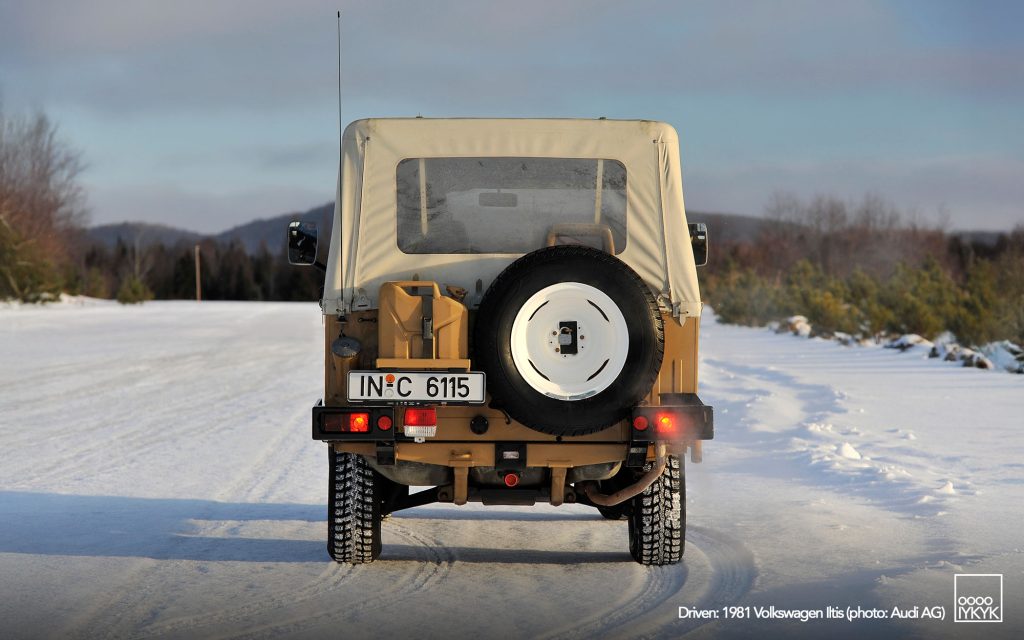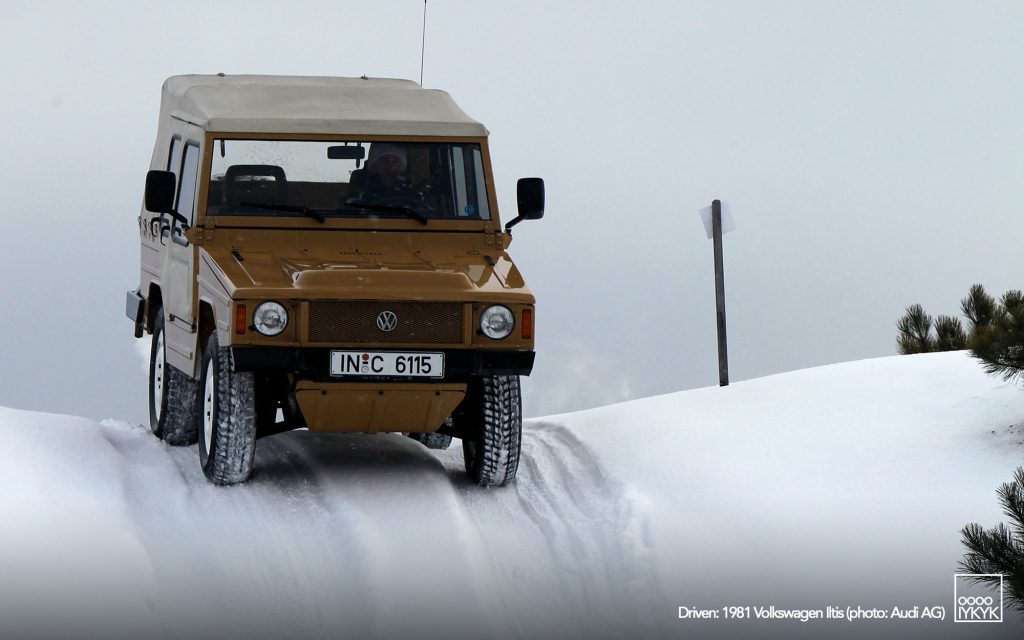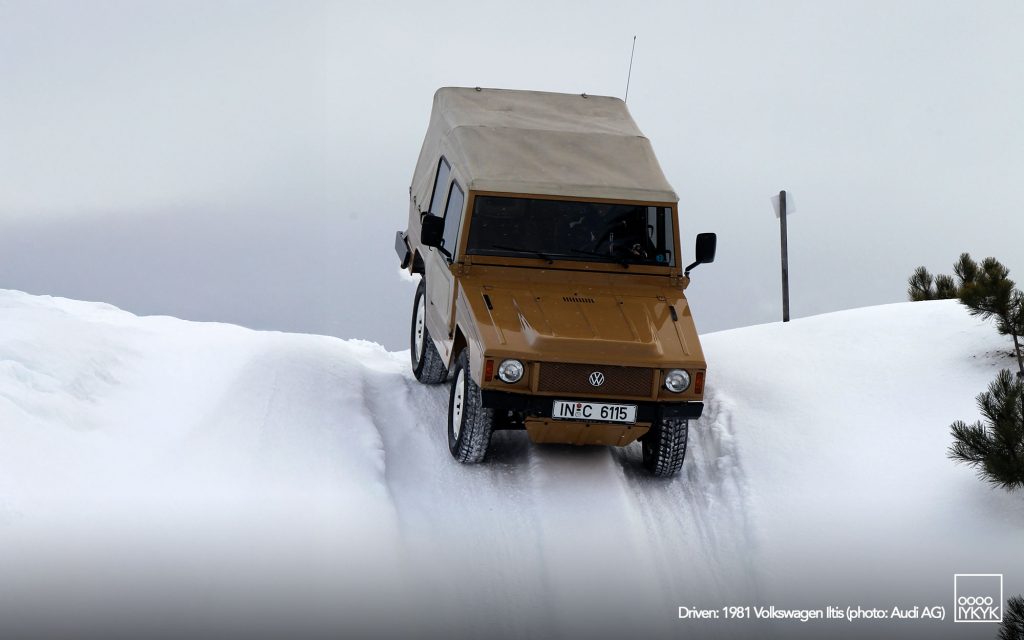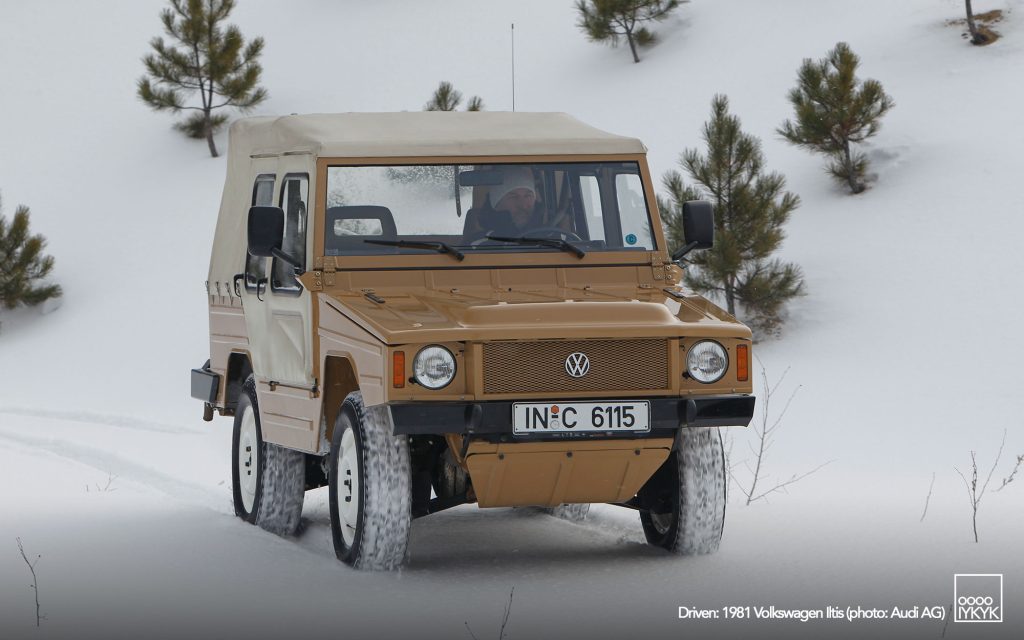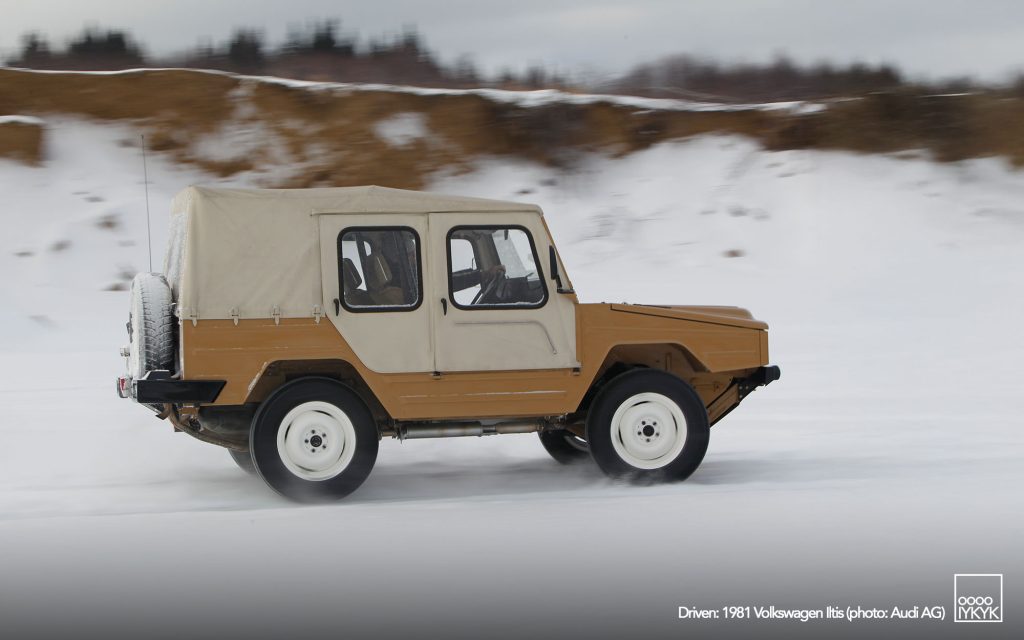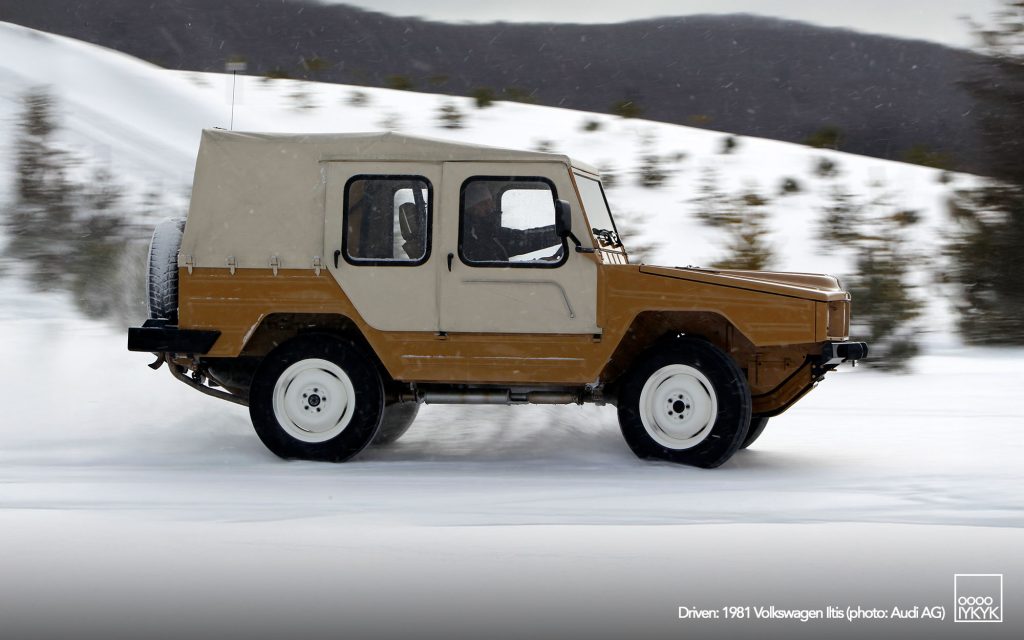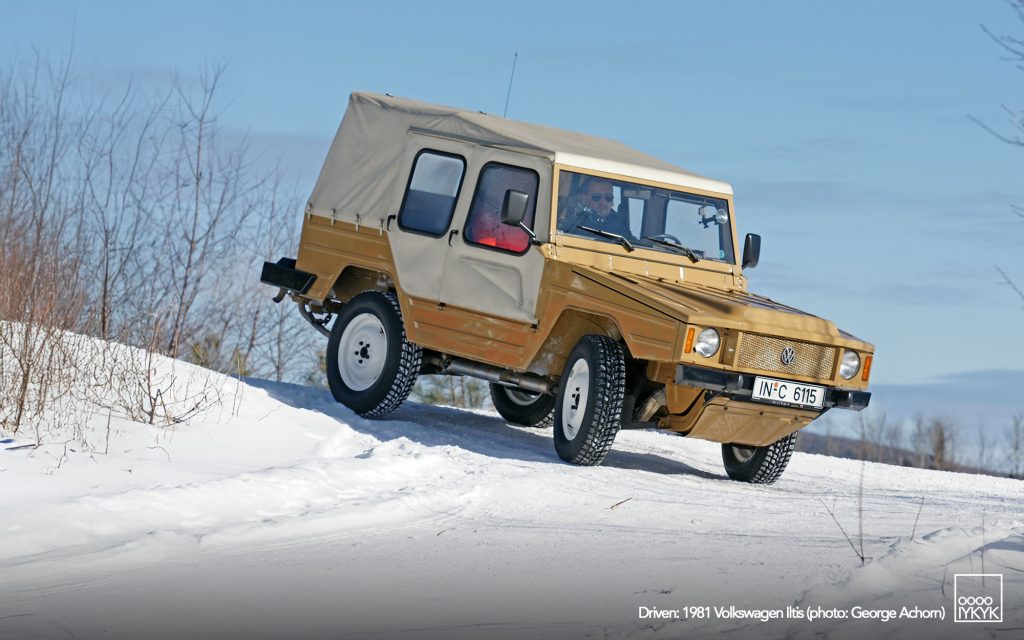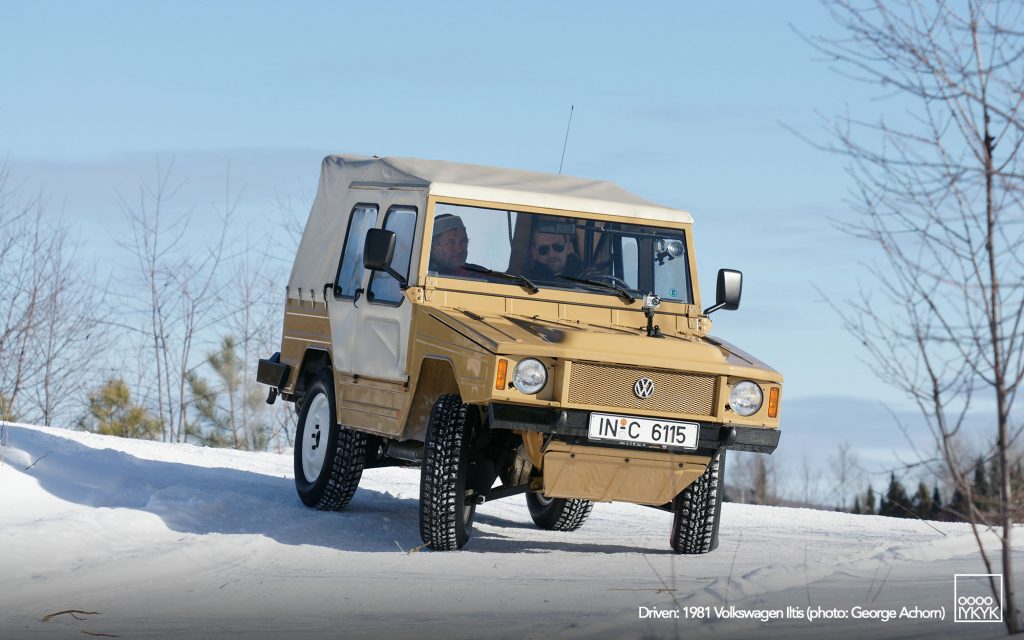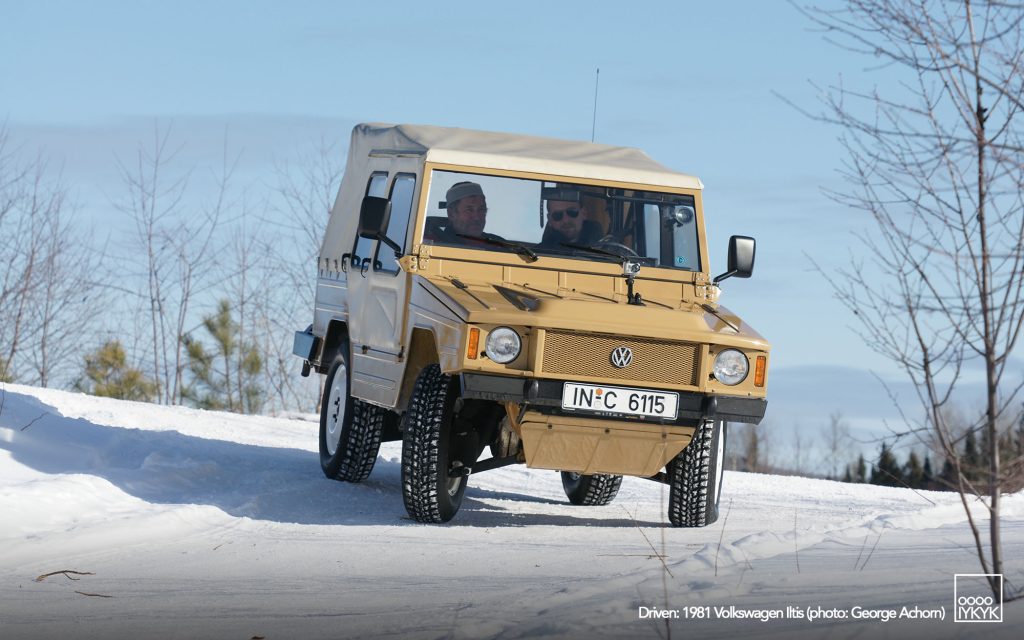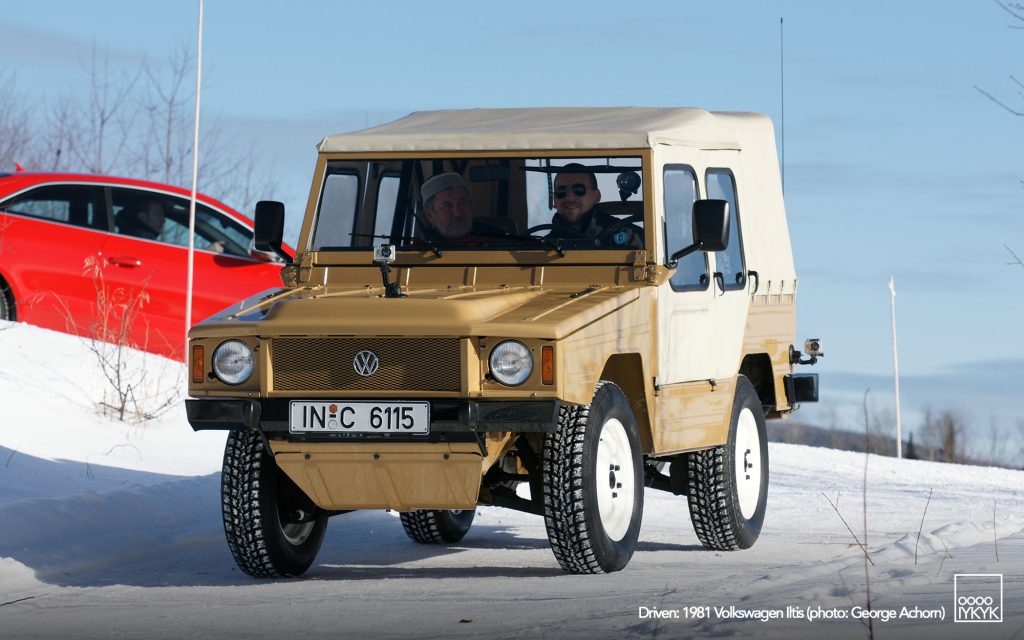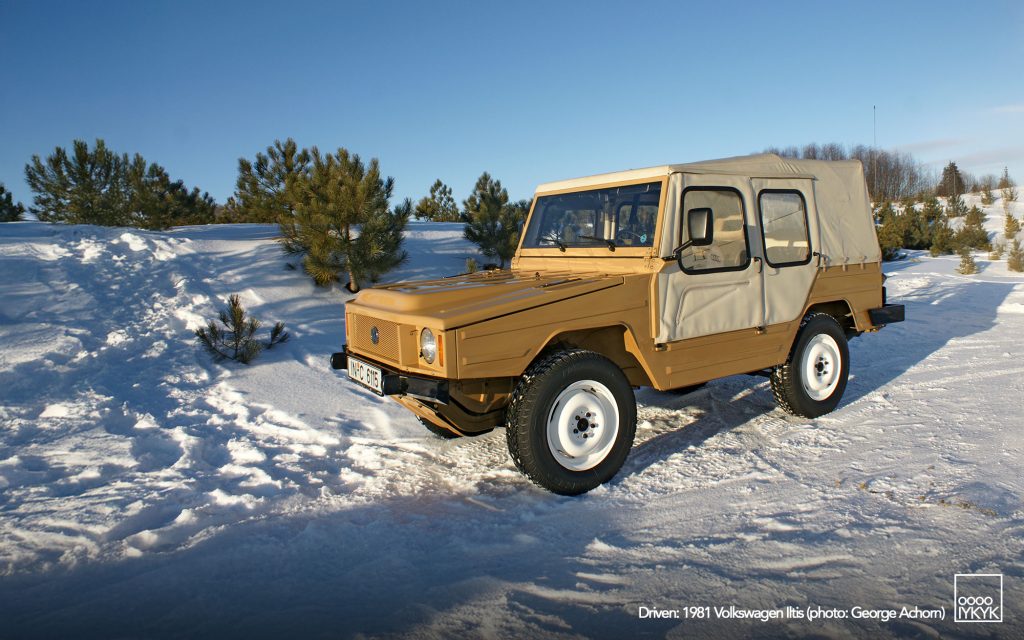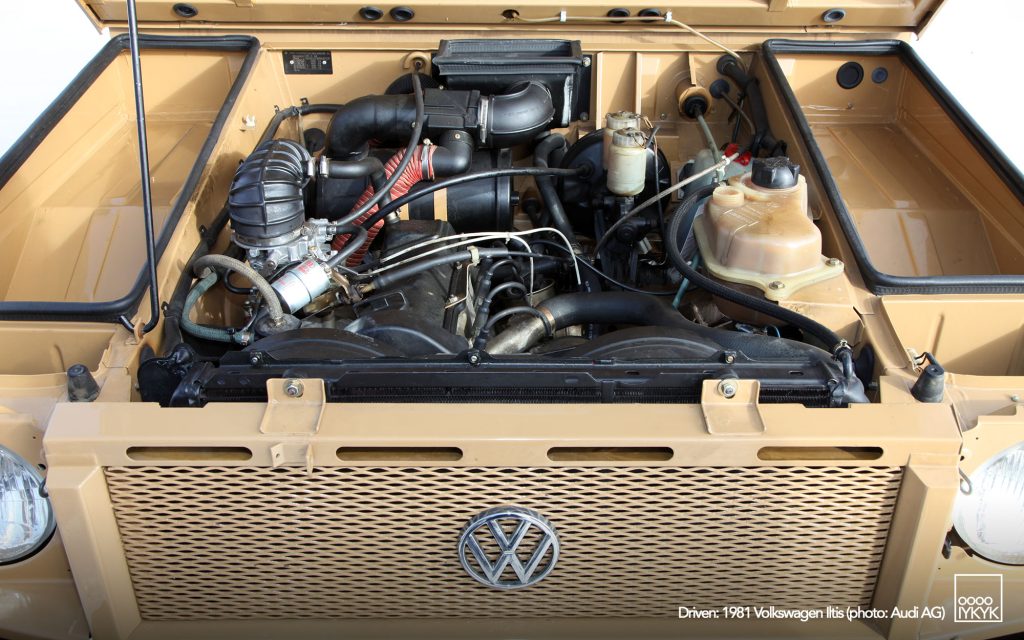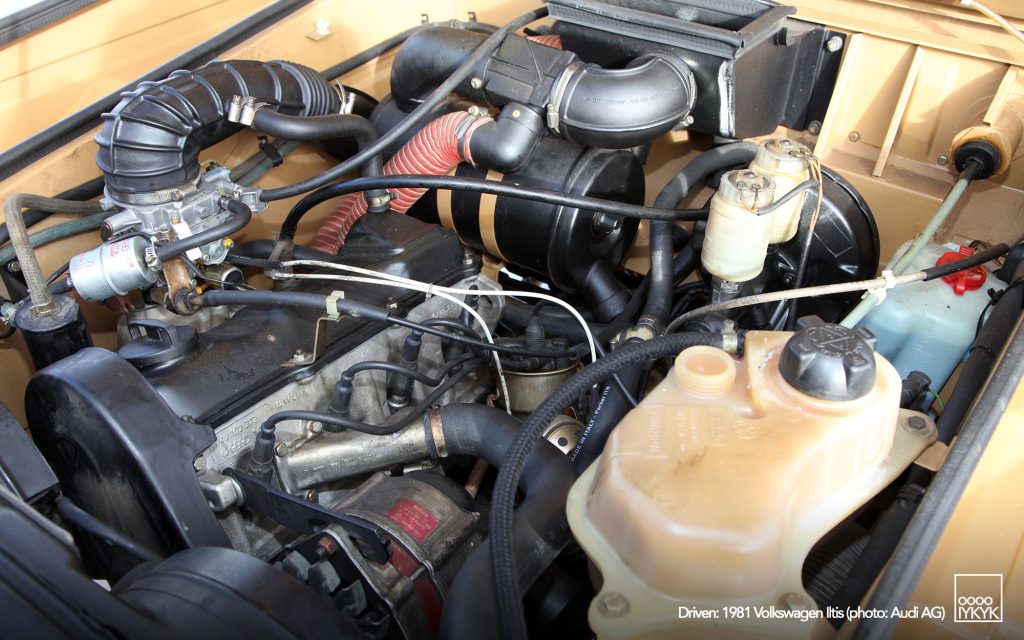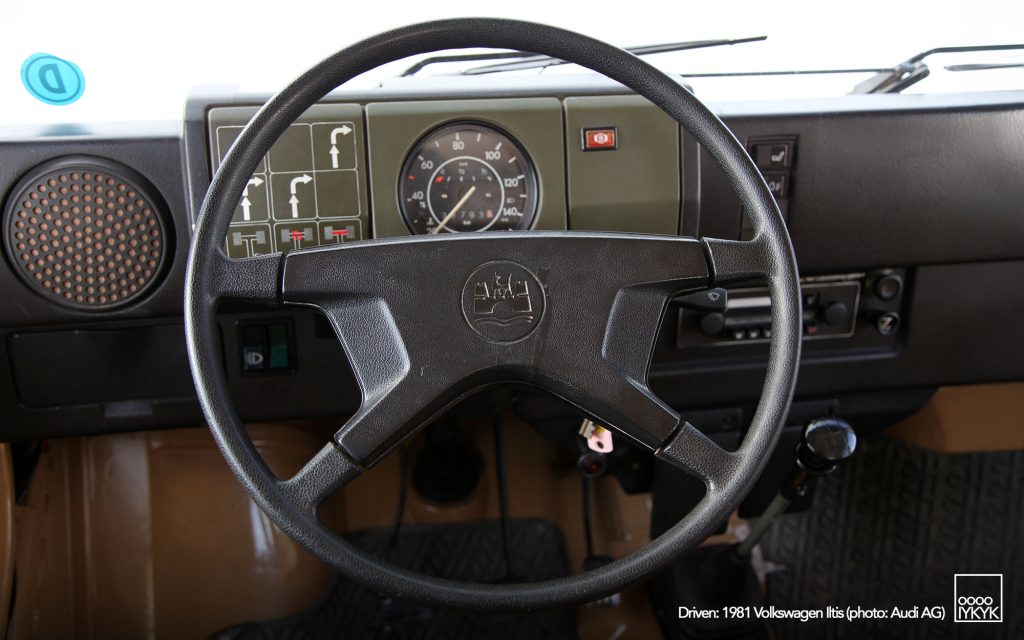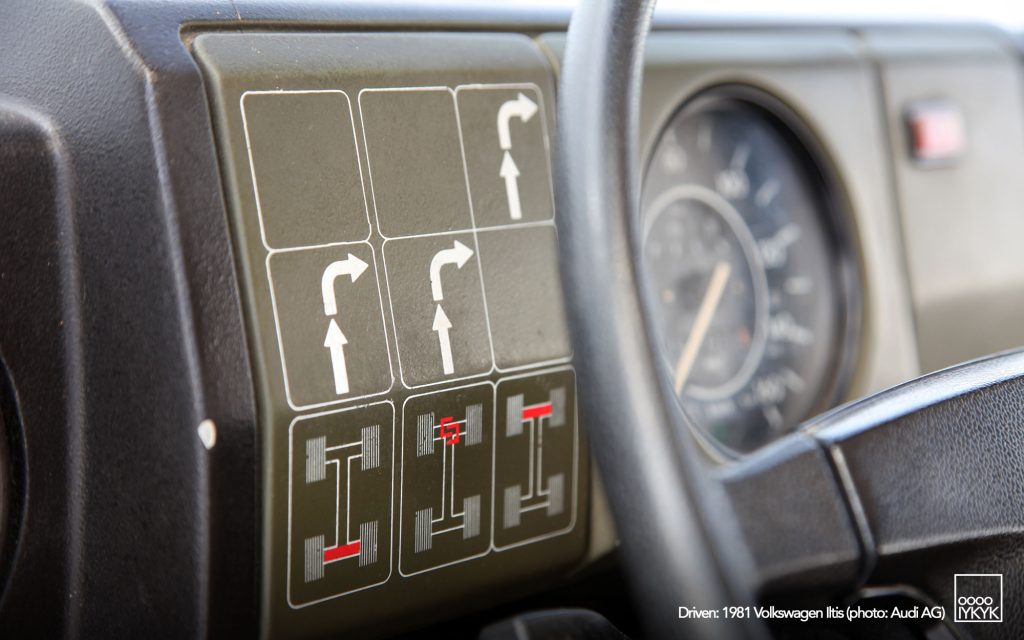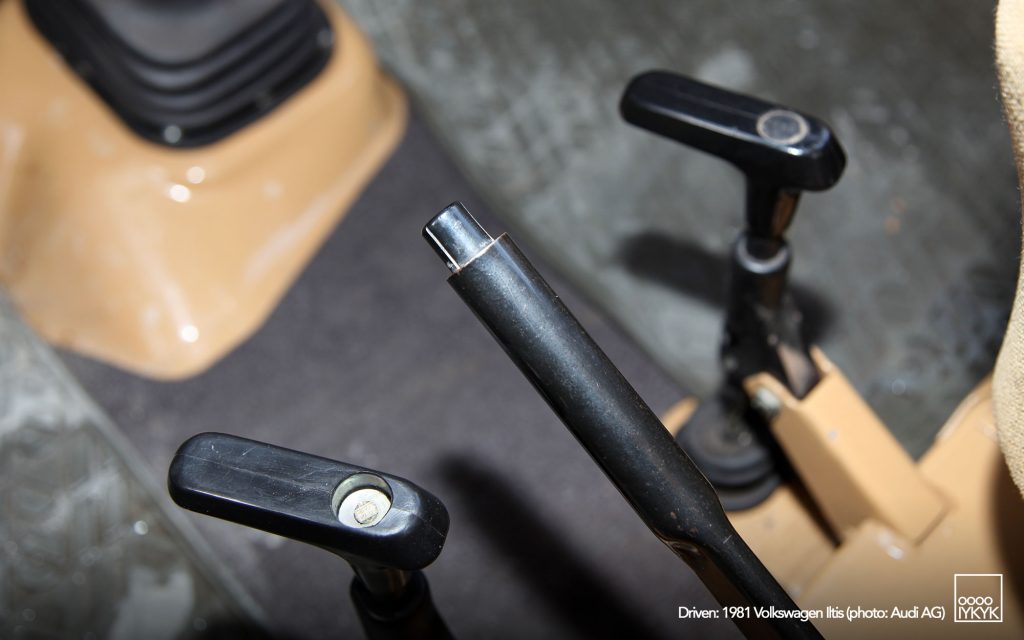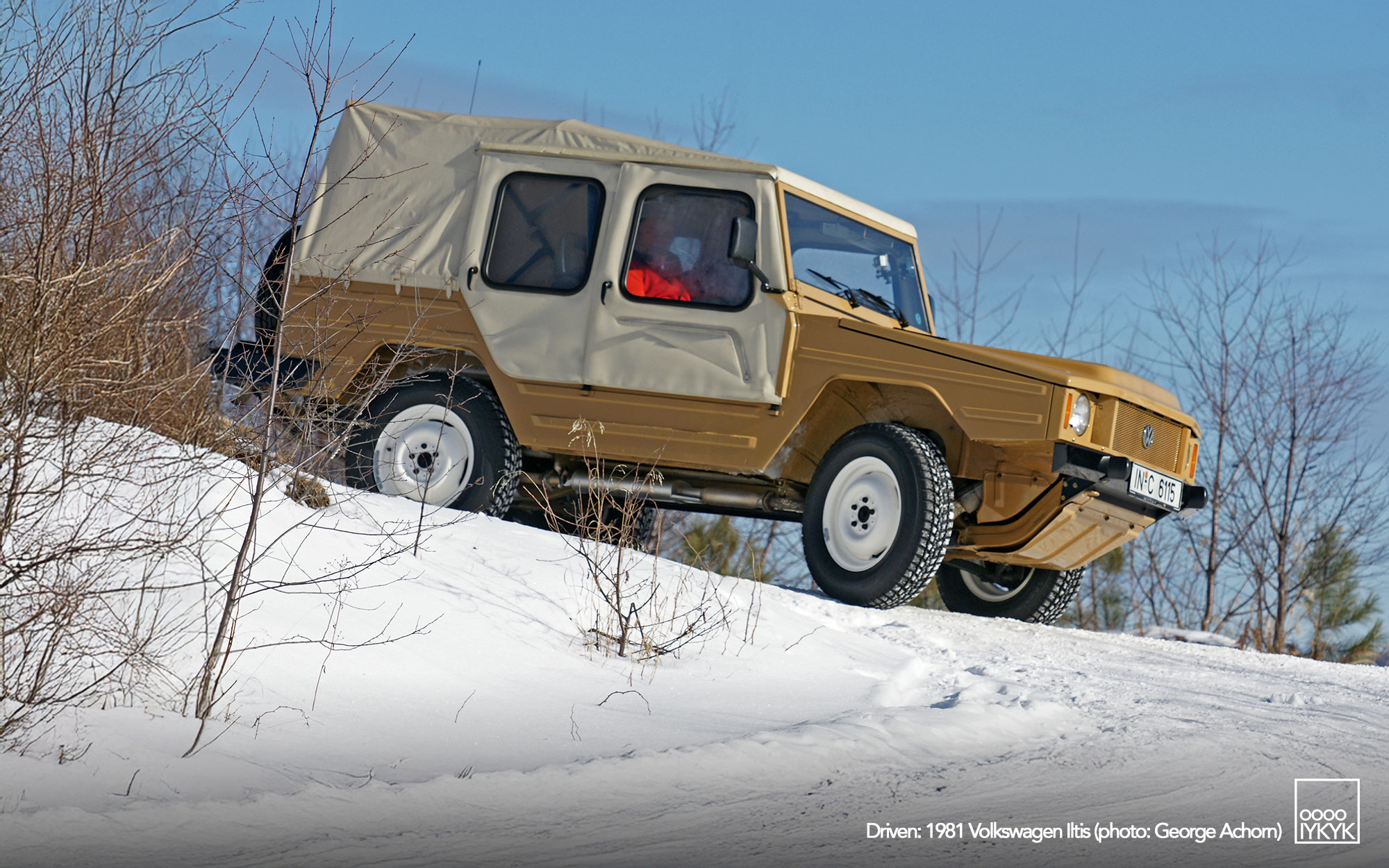The Quebec backcountry in midwinter isn’t the sort of place where you’d expect to discover a foundational moment in Audi history. Yet there it was, parked modestly among modern Audi machinery — a beige, boxy little truck that looked better suited to ferrying ski instructors through Davos than to inspiring one of the great revolutions in automotive engineering.
That truck was the Volkswagen Type 183, better known as the Iltis. And if the ur quattro is the car that made Audi’s legend, the Iltis is the one that lit the fuse — the ur ur quattro, if you will.
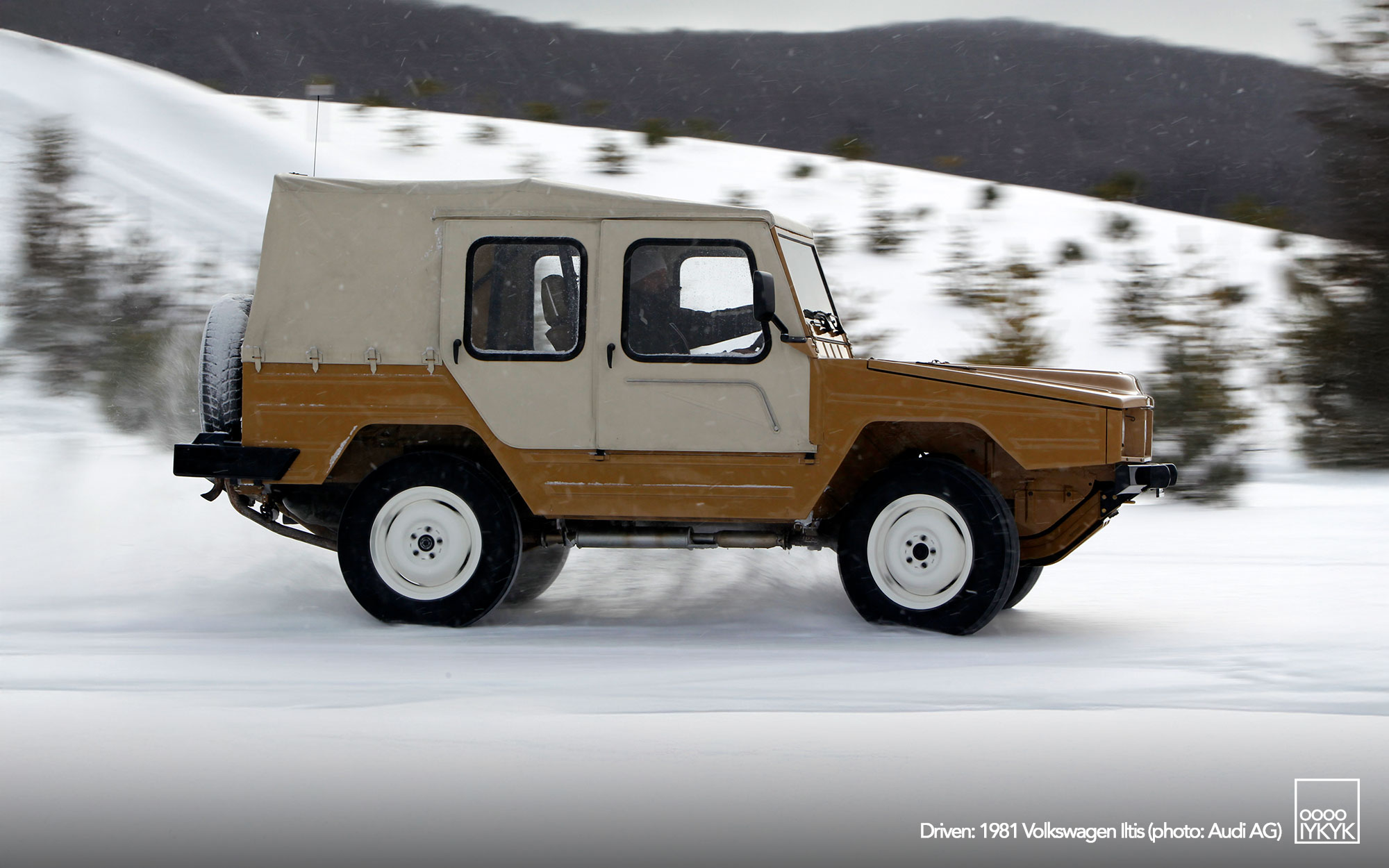
FROM MILITARY MULE TO MOTORSPORT CATALYST
The Iltis began life with no ambition beyond military duty. Developed in the 1970s as a successor to the DKW Munga, the utilitarian four-wheel-drive was designed as a side project headed by Roland Gumpert for Audi under Volkswagen’s direction and built in Ingolstadt. Its mission was simple: move troops and equipment across rough terrain reliably. Its heart, however, was pure Audi — a 1.7-liter inline-four paired with a gearbox derived from the Audi 100, reengineered for selectable four-wheel drive, a locking differential and a low range.
For all its simplicity, the system was elegant. Power distribution used bevel gears rather than a heavy transfer case, keeping weight low and packaging efficient. The driver engaged the front axle manually when needed. It was light, tough, and capable. And in Finland during winter testing, it turned heads — particularly those of Jörg Bensinger and Ferdinand Piëch.
Audi’s lead engineers noticed something remarkable: the ungainly Iltis could keep pace with — or even outrun — far more powerful test mules on ice and snow. Its traction was transformative. From there, the leap was small but revolutionary: what if Audi’s passenger cars could harness this same advantage?
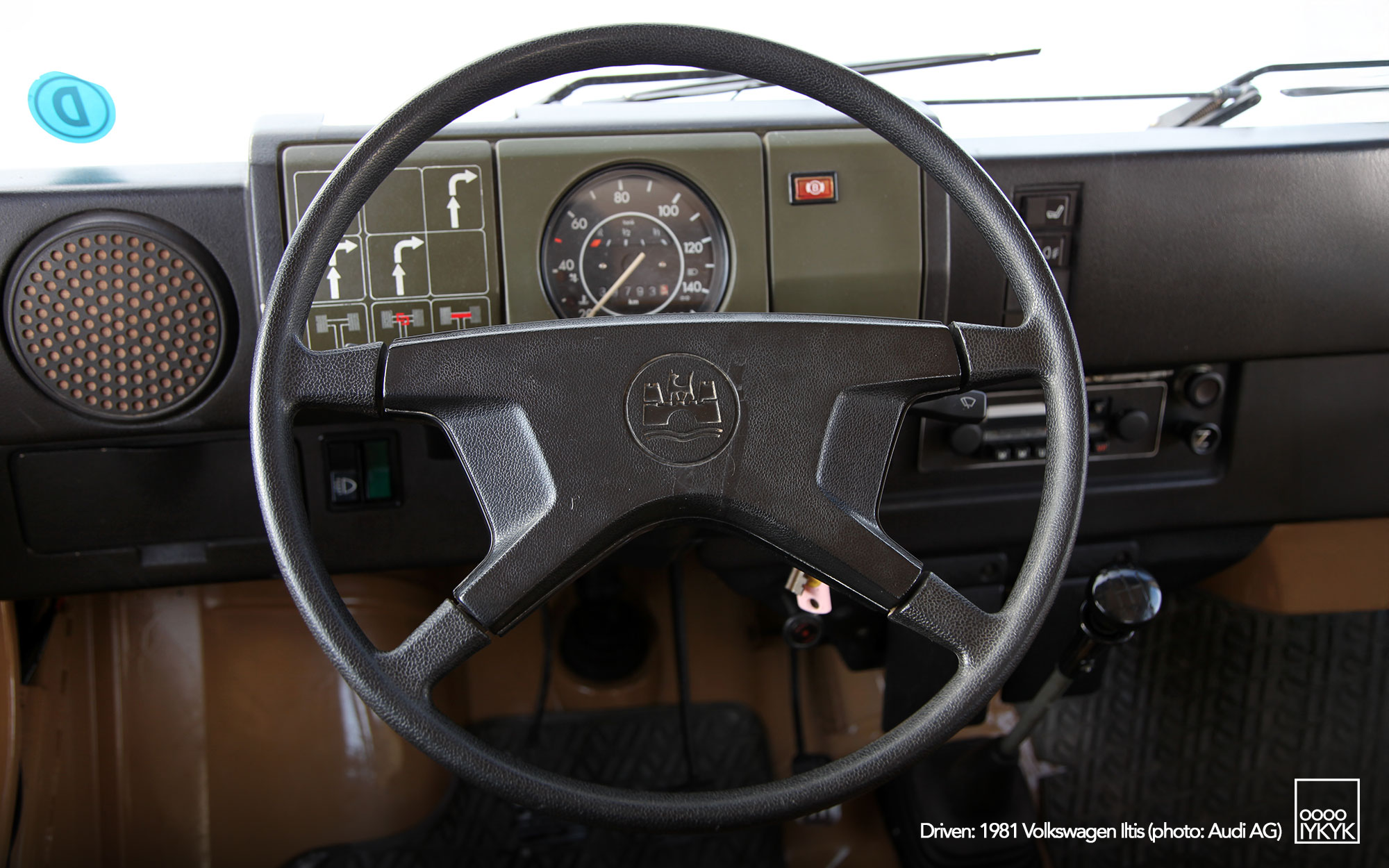
FROM FROZEN FORESTS TO THE SANDS OF AFRICA
The Iltis’ influence didn’t end in Ingolstadt. Before Audi could rally the quattro, it first had to prove to motorsport regulators that all-wheel drive belonged in competition. The Fédération Internationale de l’Automobile (FIA) still viewed four driven wheels as a truck technology, not a racing one.
So Audi went racing with trucks.
In 1980, four Iltis vehicles entered the Paris–Dakar Rally, then among the most punishing endurance events on earth. Their competition dismissed them as underpowered curiosities. Yet when the dust settled, Freddy Kottulinsky and Patrick Zaniroli finished first and second overall, with Jean Ragnotti fourth and Roland Gumpert ninth — one Iltis was even fitted with a prototype Audi five-cylinder engine producing around 150 horsepower.
That triumph did more than prove the Iltis’ mettle; it legitimized all-wheel drive in motorsport without entirely showing Audi’s hand given it lacked the more potent turbocharged engines Ingolstadt planned for their world rallying campaign. The FIA approved the technology soon after. Audi’s quattro was cleared for launch, and rallying — not to mention road cars — would never be the same again.
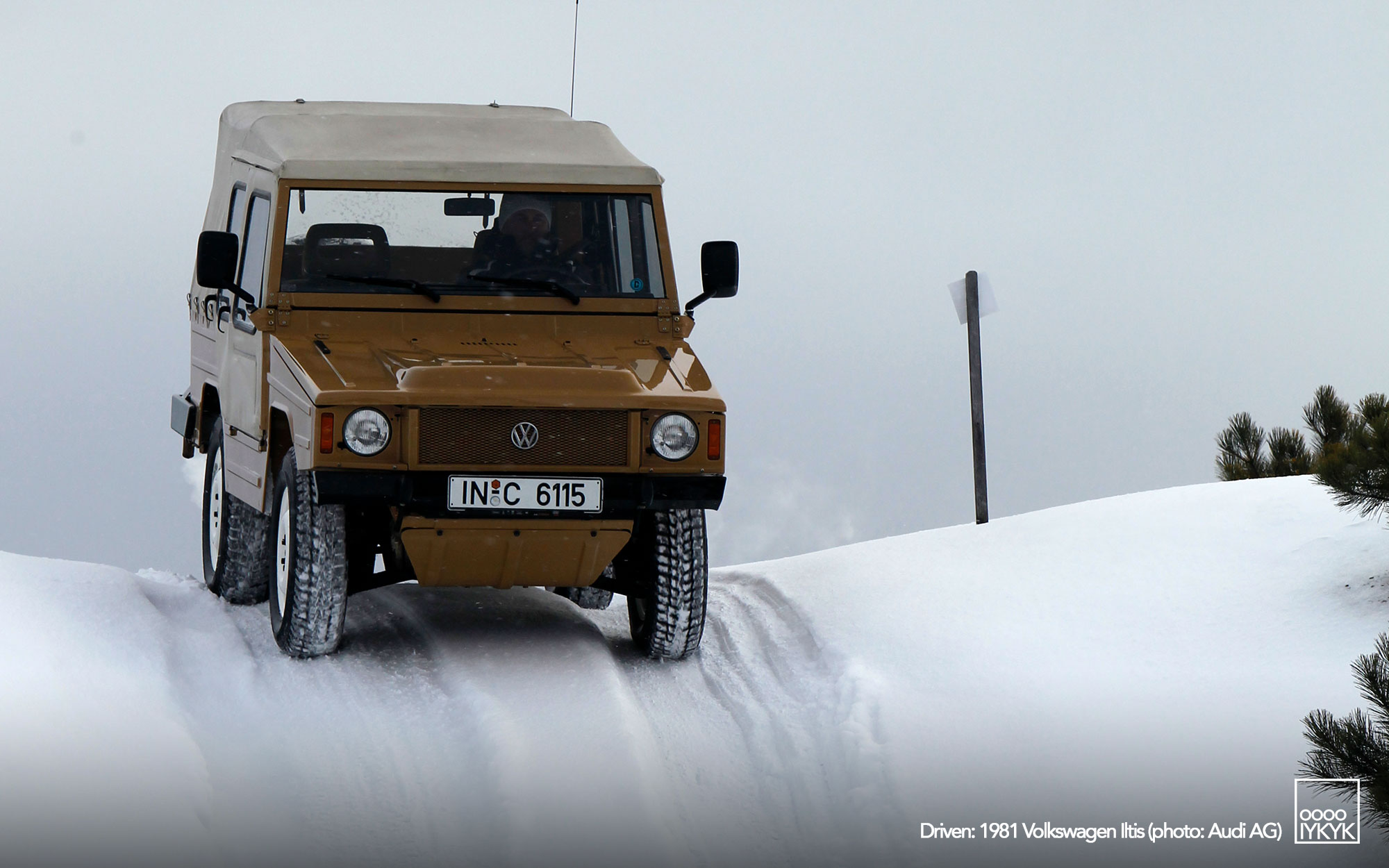
THE SPIRIT REDISCOVERED & DRIVEN
The example you see here — a 1981 Iltis from the Audi Tradition collection — never served a day in uniform. It’s one of a handful preserved for posterity, brought to take part years ago in Audi’s Fascination quattro event near Mont-Tremblant. Parked beside an array of modern RS machinery, it stood out not for performance but for presence — a living artifact there to be sampled.
The cabin is minimalist in the extreme: painted metal surfaces, toggle switches, a center-mounted speedometer optimistically marked to 140 km/h. Dr. Wolfgang Habbel, then Audi’s president, oversaw the design — proof that even the most utilitarian projects had board-level attention.
Once underway, the Iltis traded velocity for feel. On the snow-covered trails, its short wheelbase and low gearing made every incline an event. It scrambles up icy slopes and descends them with ease, the little four-cylinder humming cheerfully under its khaki hood. My Audi Tradition co-driver grinned as I stalled on a steep grade, then urged me to “let it roll back” and “give it gas.” The Iltis bucked and rebounded, then finally crested the hill — a victory cheered with laughter rather than data logs.

THE ORIGIN OF TRACTION
In an era defined by turbocharged super-sedans and torque-vectoring algorithms, the Iltis feels impossibly pure — a mechanical handshake between driver and terrain. It’s easy to see why it impressed Bensinger and Piëch so much back then. Beneath its agricultural manners lies the genetic code for Audi’s greatest achievement: the democratization of all-wheel drive.
The quattro system that followed redefined performance cars, luxury sedans, and rally history. But it all began with this humble military scout — the vehicle that proved four driven wheels could do more than move soldiers. It could move a company.
Four decades on, the Iltis still charms with its upright honesty and improbable capability. It may never have worn the four rings proudly on its grille, but its spirit runs through every modern Audi that wears them. In the deep snow of Quebec, that lineage feels as clear as tire tracks in fresh powder — a reminder that sometimes, history’s biggest revolutions start with the smallest footprints.
PHOTO GALLERY
